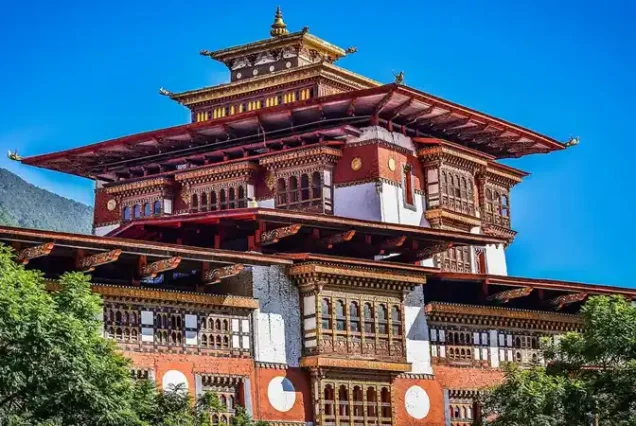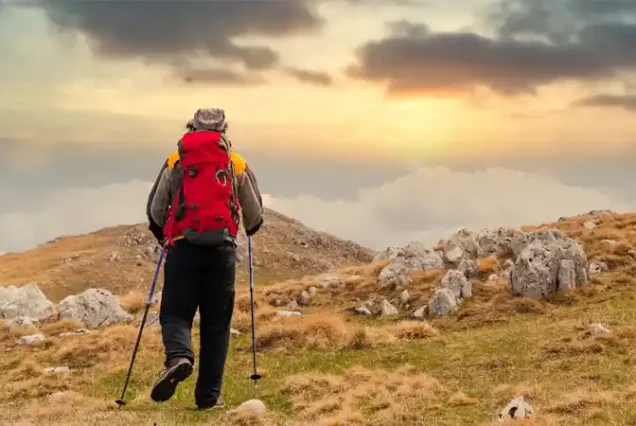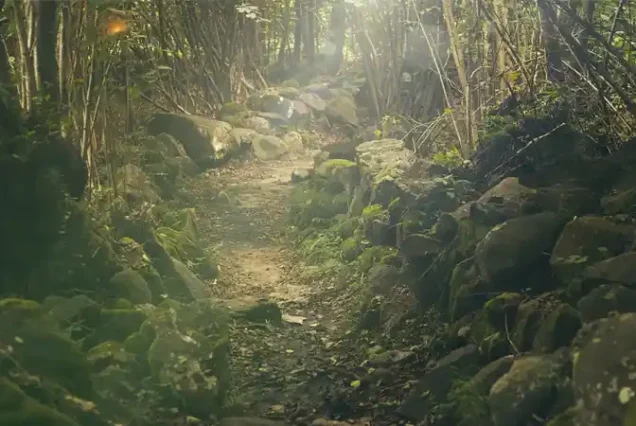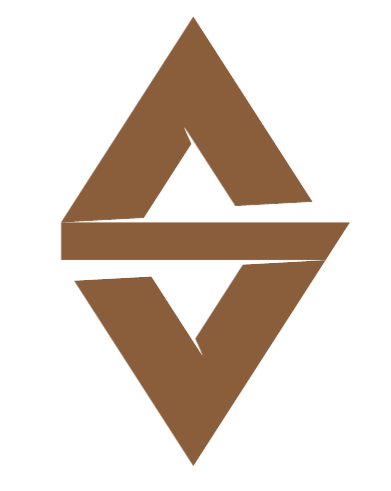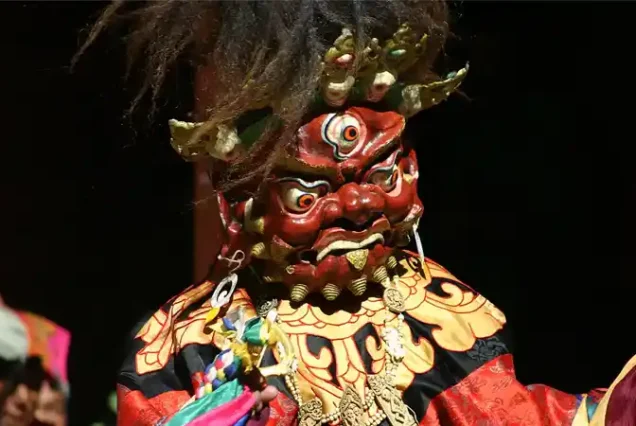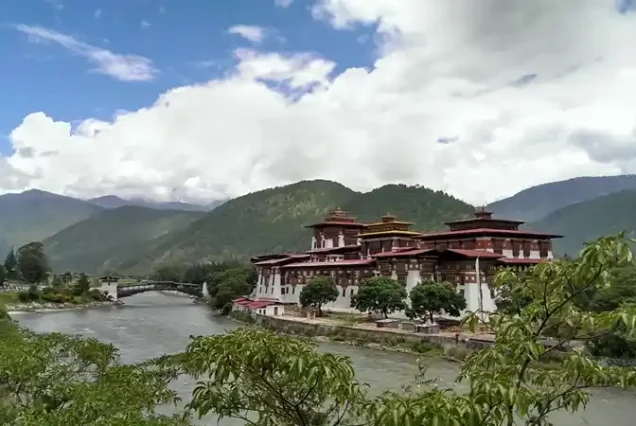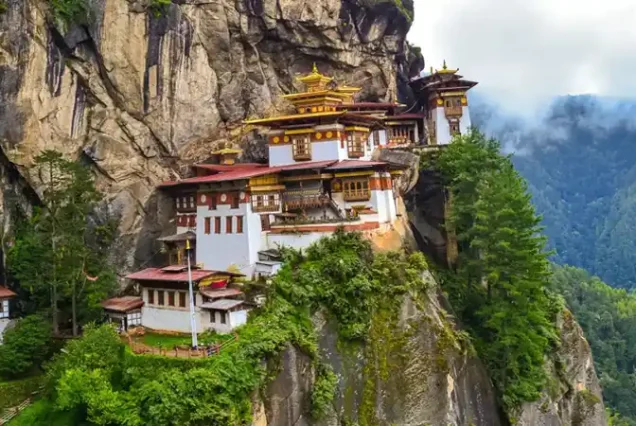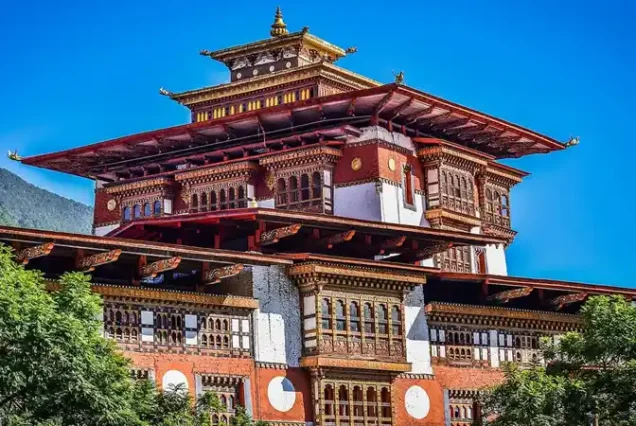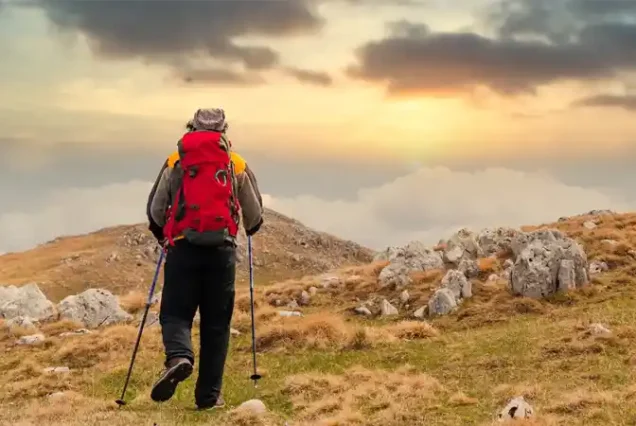Wilderness of Chomolhari Trek
Duration
15 Days
Max People
50
Min Age
10+
Pickup
Kathmandu
Wilderness of Chomolhari Trek
On the Wilderness of Chomolhari Trek and Tour, you will not only embrace an amazing opportunity to trek the hotspots of Bhutan but also get to feast on an incredible diversity of mountains and ecosystems. A hike to Takstang Monastery provides ample acclimatization for a delightful trek from Drugyal Dzong towards the campsite at Shana (2800m) and thereon to Soi, Thangthangkha and then to Jangothang. A rest day in Jangothang acclimatizes you completely for the further trek to Lingshi, Shodu, Barshong and finally to Dodina.
Along the trakking trail, Pachu River adorns the magnificent landscape along the trekking trail, offering breathtaking views as you meander through lush forests of pine, oak, rhododendron, juniper, bamboo, and spruce. The Chomolhari trek is a seven day trek, which ranges from the picturesque valleys of Paro and Thimphu, to the incredible mountain vistas of Chomolhari (7326m), Jichu Drake (6794m) and Tshrim Khang. Our tour begins with a visit to the stunning Tiger’s Nest Monastery, located high on the cliffside of the upper Paro valley. If you get lucky, you may get to spot rare fauna like blue sheep and snow leopards. Eventually, after insightful sightseeing in Thimpu, your Bhutan stay will end with indelible trekking experiences, photographs and mementos that intimately bond you to Bhutan and its people throughout your lifetime.
Book your Wilderness of Chomolhari Trek with Shangri-La Voyages Pvt. Ltd.!
Includes
- Meet, assisted upon arrival at Kathmandu by our office representative.
- All arrival / Departure transfers as per the itinerary by air-conditioned vehicle.
- 03 Nights twin/double room accommodation with breakfast at 3 star hotel in Kathmandu.
- Kathmandu city tour as per the above itinerary with our local English speaking guide including monumental entrance fees.
- 04 Nights twin/double room accommodation on full board basis at 3 star hotel in Bhutan as per the itinerary.
- Meals (breakfast, lunch and dinner) with Tea and coffee and hot water during the trek including guide and necessary support staffs with their insurance and salaries.
- Camping accommodation during the trek.
- Necessary trek transfers as per the itinerary.
- Tourism Development fee and Tourism Service Charge in Bhutan.
- First Aid Medical Kit box.
- Applicable hotel and government taxes.
Excludes
- Any meals in Kathmandu other than breakfast.
- Travel insurance.
- International air fare to and from Nepal.
- Nepal and Bhutan visa fees.
- Airfare for the sector Kathmandu / Paro / Kathmandu.
- Items and expenses of personal nature.
- Any kind of alcoholic drinks, cold drinks, snacks, laundry, phone call, internet.
- Personal Trekking Equipment.
- Emergency Evacuation.
- Any costs which arise due to a change of the itinerary, landslides, domestic flight delays due to weather, political disturbance and strikes etc.
- Any other costs whatsoever, that is not mentioned in the cost inclusion.
- Horse renting and additional porters during the trek.
- Tipping amount.
Clothing and equipment
The clothing you bring will be needed for both the warmth of the days and the chill of the nights. While trekking during the day at lower altitudes, lightweight trekking trousers and T-shirts are recommended. It is always a good idea to carry a waterproof jacket and some warmer clothing with you, as mountain weather is notoriously unpredictable. For the cold nights, thermal underwear, a warm fleece jacket and even a down jacket will help to keep you warm.
Kitbag (duffel bag / duffle bag)
For all the treks your gear that is carried by the porters or yaks is best packed in a strong kitbag. A simple design without wheels and without foldable handles is best. You can buy in Kathmandu, although they are not as tough as say the North Face Base Camp Duffel.
Sleeping bag
Down-filled bags are better. Beg, borrow or steal a good one (i.e., 4-5 season) because high altitude nights will be cool. Good down is fluffy, light and thick. A muff (an extra section around the neck) makes a big difference to the overall warmth of a bag. Reasonable sleeping bags are cheaply available for rent in Kathmandu. Alternatively add a fleece sleeping bag liner to add warmth to a 3-4 season bag.
Sleeping bag liner
Cotton, silk or fleece saves washing your sleeping bag and adds warmth. Cotton or silk ones can be made in Kathmandu but are more easily bought from home. Fleece ones are readily available in Kathmandu and cost around $15.
Daypack
This should be comfortable and a good waist band that transfers some of the weight to the hips is most important. It needs to be big enough to take a jacket, fleece, water, camera and odds and ends.
Boots
For a happy trek you need comfortable feet. Good boots have good ankle support, plenty of toe room for long descents, a stiff sole to lessen twisting torsion, and are light because with every step you lift your boot up. Look at the inner lining – leather is good and Cambrelle is even better, a material that eats smelly feet bacteria. Good lightweight trekking boots or light all leather boots are perfect. Boots must be lightly worn in before trekking and this should include some steep hills to show up trouble spots. The longer the trek, the better the boots you need.
Socks
In the low country your feet will be warm or even hot while walking so quality cotton mix sports socks are best. Three to four pairs are enough. Thick trekking socks are better for higher up and cool evenings, four pairs. Mostly modern trekking boots fit snugly so, wearing two pairs of socks at the same time is impractical.
Camp shoes/sandals/flip-flops
At the end of the day sandals or running shoes are luxury for your feet. Flip-flops, available for cheap in Kathmandu, are a necessity for showers during the trek.
Fleece jacket/vest
Most trekkers consider this essential, but alternatives are a thick thermal top or a light down jacket. In Kathmandu you can get almost any sort of fleece you need.
Down jacket/vest
It is essential for the cool evenings. If you don’t already have a jacket, they are easily rented in Kathmandu for around US$ 2 a day. A down jacket is the best option, although a vest can also be brought along.
Wind/rain jacket
Wind jackets are waterproof and breathable. Plastic ponchos or non-breathable raincoats are not suitable. Gore-tex (or similar) jackets are recommended for treks over passes or climbing trips. Lighter jackets should be a second jacket, easy to throw in the daypack for warmer days.
Thermal shirts/underwear
Good thermals, both tops and bottoms, are one of the secrets to cold weather trekking comfort. Expedition-weight thermals are the most versatile and can be worn as your high altitude trekking top or under pants on extremely cold days. Zip-up tops are great for changeable weather.
Nightwear thermals
Silk-weight is lightest and warm, mid-weight is perfect. Great for warm nights in the sleeping bag!
Fleece/sweatpants
Great for the chilly evenings, thicker is better (except for when the stoves in the teahouses really heat up!). Fleece or sweat pants are readily available in Kathmandu.
Day-wear shirt
T-shirts are popular but a cotton shirt or mixed yarn travel shirt is more versatile. The collar protects the back of your neck and the sleeves can be rolled up or down. Take two or three so you can swap damp for dry.
Trekking pants
You will live in these. Light material, loose and dark-coloured is best. You can survive with only one pair, although two is better.
Wind pants
If your trekking pants are reasonably windproof then special wind pants are not needed. If you do bring a pair, it is not necessary to have Gore-tex. Similar, non-waterproof is quite okay.
Underwear
4 to 7 pairs
Warm hat/balaclava
Hats are nice for the evenings, and essential for cold trekking days. Joel brings at least 5 wool hats, you might get away with fewer!
Neck gaiter
For winter trekking they are really the best for staying warm.
Trekking poles
Definitely useful, especially on steep, rough terrain, but if you are not used to using them you can survive without.
Sunglasses
Suitable for snow, it is bright up there, but specialized glacier glasses with side pieces are not needed. Contact lens wearers report very few problems except cleaning them in the conditions. Ski-goggles are unnecessary.
Mittens/gloves
A good pair of wind-proof gloves is essential. Available in Kathmandu for cheap if you don’t have a pair.
Water bottle
Water should be one liter or more in capacity, take boiling water and be leak-proof. Nalgene or a similar brand, or European fuel bottles, are best. You need at least 2 water bottles, or at least 1 water bottle in addition to a Camelback or hydration system. Naglene’s are great, available in Kathmandu, real or fake.
Pee bottle
Pee bottles are very useful on cold nights you can buy a cheap one in Kathmandu.
Torch / Flashlight
Petzl Tikka’s and other similar torches with led bulbs rule. They are adequate for climbing although many people prefer a second torch. Most of the teahouses still don’t have lights in the rooms, so headlamps are ideal for reading in bed, also essential for trips to the toilet at night.
Toiletries and odds & ends
Essentials for the month only and available en route in Namche and most lodges. There are a surprising number of showers or buckets of hot water available. The smallest tube of toothpaste is perfect for a month. We provide toilet paper for expeditions; you bring or buy along the way for tea-house treks. Deodorant can spare you grief with your room mate/tent partner.
Towel
Bring only a small one trekking, or a camp towel. In Kathmandu the hotel supplies towels.
Sunscreen and lip balm with sunscreen
The sun is strong at altitude, especially after snow. Bring at least sunscreen and lip balm with SPF 15, and better still SPF 30+.
Moisturizer
A small tube for sensitive or well cared for skins. The air is dry and the sun harsh.
Sun hat
A baseball cap is ideal. Bring 5, if you like to change colors every day like Joel does. A wide-brim sun hat is also good.
First aid kit
We carry one with aspirin, paracetamol, ibuprofin, decongestants, lozenges, various antibiotics for Nepalese varieties of diarrhoea and chests infections, Diamox (an acclimatizing aid drug), antiseptic, antihistamine cream, rehydration, bandages and band-aids, tough blister tape (but not moleskin).
You should bring any personal medicines that you need.
Water purification
A bottle of iodine tablets such as Potable Aqua, Polar Pur or Couglans. We mostly use to water from the lodges but occasionally take water from the streams. The use of mineral water is discouraged from an environmental point of view, but is available everywhere.
Books
One or two with high swapability. Kathmandu has some great second-hand book shops, as does Namche and Gokyo.
Money-pouch/belt/inside pocket
Most people find wearing one while trekking is a hassle and keep it buried in their kitbag or daypack. The Kathmandu hotel has safety deposit boxes.
Snow gaiters
Not needed but if you have them, bring them.
Crampons and ice axe
Inflatable sleeping pad
Thermarest or similar – for expedition/climbing treks only, not tea-house treks. We provide a sponge foam mattress and if necessary, a closed cell pad, but if you have your own Thermarest, bring it. We also have a few available for rent.
Down booties
Great for cool evenings. Available in Kathmandu.
Evening camp-wear
Around camp you can wear camp shoes, sandals (for non-winter treks) or leather boots. No matter what altitude and what season, it is cool to bloody freezing in the evenings. By far the best clothing is:
+ A down jacket, light or heavy. These areas available for rent or for sale in Kathmandu.
+ Thick fleece pants
+ Fleece hat and neck gaiter
+ Thick sox
Snacks and nutrition
You will feel your best with plenty of good food and keeping hydrated. We provide the food and the water. However you will also want wholesome snacks and vitamin tablets. Chocolate, chocolate bars, dried fruit bars and dried fruit are readily available in Kathmandu, but Clif bars, Power bars and the like are not usually available.
Climbing gear for trekking peaks :-
This assumes you have all the trekking gear like warm hat etc.
- High quality sunglasses. Side pieces are not essential; we can always use tape for a day. Ski goggles are unnecessary.
- Neck gaiter or balaclava; one or the other
- New liner gloves (i.e., thin gloves)
- Fleece/windstopper gloves
- Windproof gloves/mittens if you don’t have windstopper ones.
- Windproof pants/climbing bibs – these don’t have to be fancy and you can buy in Kathmandu cheaply
- Snow gaiters
- Plastic boots/leather boots – see the discussion below
- Leather boot waterproofing (snow seal etc)
- Trekking pole
- Ice axe, non-technical is generally better
- Crampons
- Light harness (Black Diamond Alpine Bod is perfect)
- Jumar
- Belay device: ATC or figure of 8 etc
- Two locking carabiners, two ordinary ones
- Two prussiks, one short, one longer
Helmet
It is always sensible to climb with a helmet, but it is one more thing to carry and only use for a few hours. For the trekking peaks it is rare for climbers to use a helmet, but that is your decision. On Island Peak rock fall is possible but rare.
Boots
If you have plastic boots, bring them. If you don’t and you are not a climber, consider carefully whether you need to get them or not – you will only be using them for a single day… For Chulu Far East and Tengkoma good all leather boots are quite adequate. For Island Peak in Dec and Mera Peak any time, you need plastics – or I have 4 sets of super-gaiters, i.e., full insulated over-boots, and with good (i.e., stiff) leather boots, these are an alternative to plastics.
Gear available in Kathmandu
It’s not necessary to spend a lot of money buying extra equipment and clothing before your trip. Majority of these gears can be bough or hired at reasonable rates in Kathmandu. You can get all the trekking gears, both Nepali made and original.
Equipment provided by company
On all our Camping treks we provide all the tents, sometimes dome tents, sometimes sturdy A frames and normally people share one tent between two; a foam mattress each; all the cutlery and utensils, cooking pots, stoves; candles/kerosene lantern, tables and stools, kitchen tent, dining tent and toilet tent; all the main meals while trekking but not snacks. On Tea house trek there is no necessity to provide any equipment.
Who carries what for the climb?
To begin with, you will carry a day pack with your personal gear, such as a down jacket, crampons, harness, and other essentials, which means your pack can end up quite full. However, if anyone is struggling and the guides and/or Sherpas have space, they may be able to lighten your load.
Trip Notes
Please send us enquiry [email protected] for price.
Tour Plan
Tour Map
We operate tour, trekking and rafting in all over Nepal, Tibet, Bhutan and North East India, to the canyons, to the mountains, to the rivers and beyond.
Quick Links
About Company
- © 2025 Shangri La Voyages All Rights Reserved.







